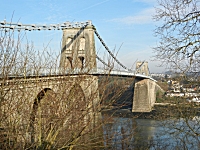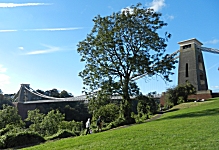Several commentators have drawn attention over recent weeks to the very high expense in investing in the infrastructure projects (such as HS2) which have been used to attempt to bring the United Kingdom economy back on track.
If one carefully looks at the main infrastructure creators of the more modern economic world throughout the Victorian period, these have certainly been of a mixed economic and practical success.
The perception of the majority is that so much of what the Victorians did was a huge success yet there are many examples of projects which were heavily invested in by both the private and public sector which varied from being of dubious economic benefit to unmitigated disasters.
One of the most famous examples was the tunnel under the Thames constructed by Marc Brunel, father of Isambard. The independent backers ran out of money and the scheme had to be bailed out by the tax payer – not dissimilar to the Channel Tunnel.
As with the Channel Tunnel, the tunnel was not completed in such a way that an economic benefit to reflect its costs of construction could be made.
The Thames Tunnel Company formed in 1824 started work in 1825 using Marc Brunel’s tunnelling shield which was a revolutionary advance in tunnelling technology.
The completed tunnel cost in excess of £600,000 in 1843, far exceeding its initial cost and estimates. This was a huge sum of money at the time.
In terms of economic rationalisation, the tunnel was a complete disaster.
The East London Railway Company ultimately used the tunnel from 1865 and on and off ever since it has been used as part of the public transport system by primarily the underground system and now forms part of the London over-ground railway system.
Other smaller tunnels used as drainage systems which covered Britain’s major cities including London, Manchester and Birmingham were an undoubted success. Essential facilities and services were provided for which were directly funded (in the main) by the people via government. These investments were hugely advantageous to the health and well being of society as a whole.
Investments in transport infrastructure also frequently failed. Isambard Kingdom Brunel created the Great Western Railway which famously had a gauge different from that used in the vast majority of the country. This created complete lack of continuity and huge problems where trains were expected to cover different areas of the country. Indeed, at some stations which were shared by different railway companies, passengers had to alight with their baggage and get onto another train.

One of the world’s first suspension bridges which Thomas Telford built over the Menai Straits is a very dramatic feat of engineering. The “Colossus of Roads†was actually responsible for many infrastructure projects which had a varied economic history and these included such diverse schemes as St Catherine’s dock, infrastructure on the Trent and Mersey Canal, the suspension bridge at Conwy, the Caledonian Canal and many other schemes. Some of these were financially successful and practical and some are still used to this day.
Similarly, Isambard Kingdom Brunel was also very influential in constructing various schemes that were both successful and didn’t last the test of time economically (such as the Great Western Railway). He designed and constructed a number of dramatic infrastructure projects which, however, did stand the test of time such as the Clifton Suspension Bridge, which shares a lot of similarities in construction and design to the Menai bridge in North Wales.

How does this assorted track history affect us today?
Well, we are about to spend £43 billion of tax payers money on the HS2 link. This effectively is going to save no more than the odd half an hour here or there for people to access Birmingham and Manchester via rail from London. The Institute of Economic Affairs has suggested a likely total cost will be £80 billion pounds.
It is estimated to cost £1400 per head for every man, woman and child living in the United Kingdom. This incredibly expensive long term “project†was perhaps initially forced through by the new coalition government needing to be seen to do some heavy infrastructure projects at the start of this most recent recession.
The number of smaller sensibly channelled projects that could be carried out around the whole country could have vast and far reaching implications for large portions of the country. Instead, it appears the HS2 ‘white elephant’ is to be continued.
The level of upset in the Chilterns and the other areas between London and Birmingham is immense.
Some commentators have pointed out that if Scotland cedes from the union, part of the infrastructure costs to connect the top end of the HS2’s destinations to Glasgow and Edinburgh will effectively be for the benefit of a different country that will not be paying for the expensive additional links that will be required. Certainly there is a strong argument that if Scotland does cede from the union, any links beyond Manchester or Newcastle should actually be paid for by the Scottish Government.
Such decisions made by politicians are frequently made with such a long term end in sight that it is unlikely that the politicians making the decisions now would be around to see the completion of such schemes, if indeed they are completed, and therefore will not have to take any responsibility other than in the history books for the inevitable excessive cost that these projects will come in at over original budgets.
Yet at the same extent the essential infrastructure like the drainage systems constructed in the Victorian era which are still providing benefit today are often overlooked. How much security of power could be provided within the UK via hydro electric schemes across the Bristol Channel and elsewhere which could be owned by the country on behalf of the people that could be funded from the billions of pounds being spent on this improvement to the existing train track system.
Lessons should be learnt from the Victorians that the economic race to build infrastructure at any price should not be accepted without a hard common sense look at the economic long term viability and cost benefits that will result.
LCB 09/09/14

